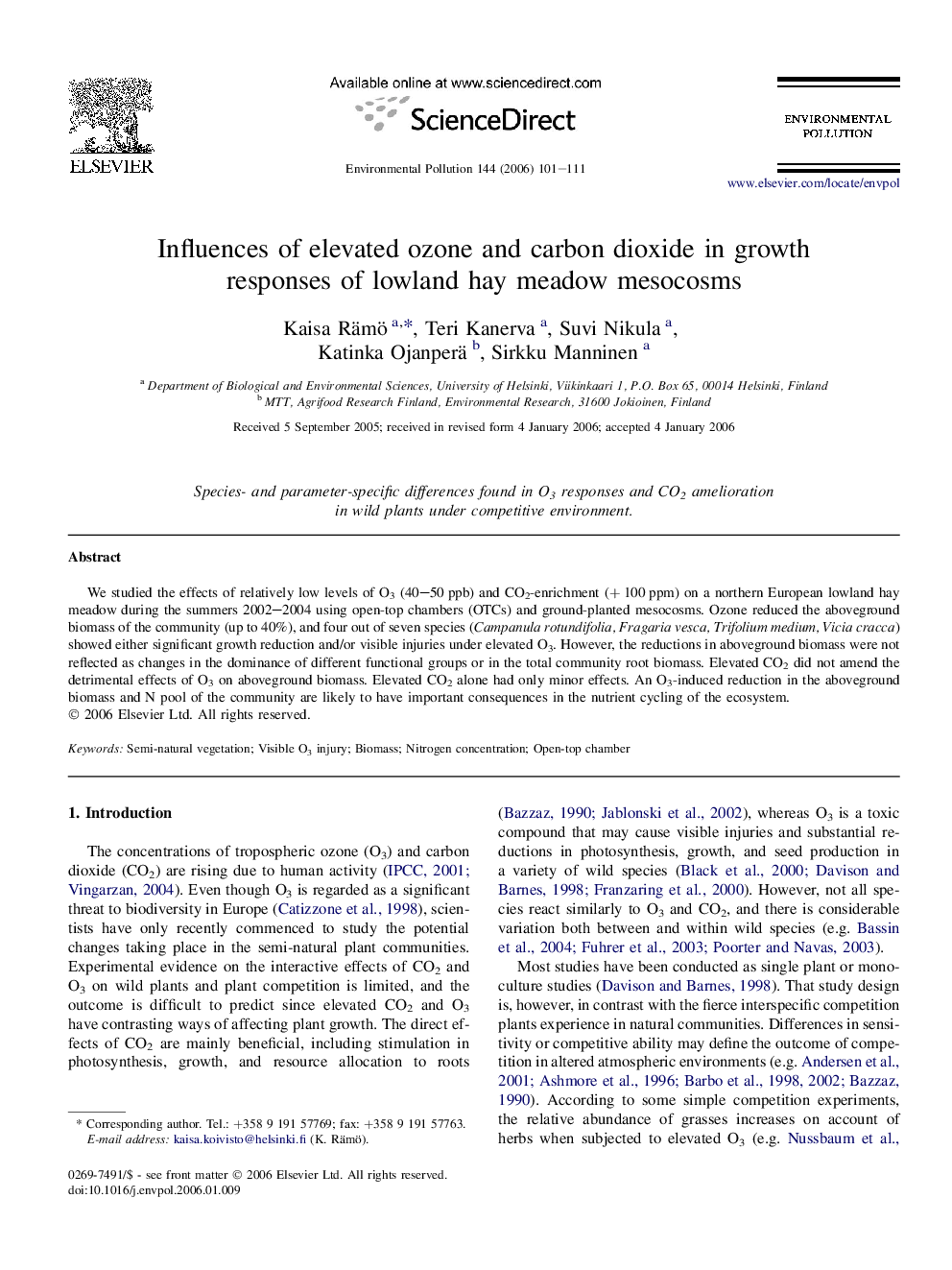| Article ID | Journal | Published Year | Pages | File Type |
|---|---|---|---|---|
| 4427938 | Environmental Pollution | 2006 | 11 Pages |
We studied the effects of relatively low levels of O3 (40–50 ppb) and CO2-enrichment (+ 100 ppm) on a northern European lowland hay meadow during the summers 2002–2004 using open-top chambers (OTCs) and ground-planted mesocosms. Ozone reduced the aboveground biomass of the community (up to 40%), and four out of seven species (Campanula rotundifolia, Fragaria vesca, Trifolium medium, Vicia cracca) showed either significant growth reduction and/or visible injuries under elevated O3. However, the reductions in aboveground biomass were not reflected as changes in the dominance of different functional groups or in the total community root biomass. Elevated CO2 did not amend the detrimental effects of O3 on aboveground biomass. Elevated CO2 alone had only minor effects. An O3-induced reduction in the aboveground biomass and N pool of the community are likely to have important consequences in the nutrient cycling of the ecosystem.
